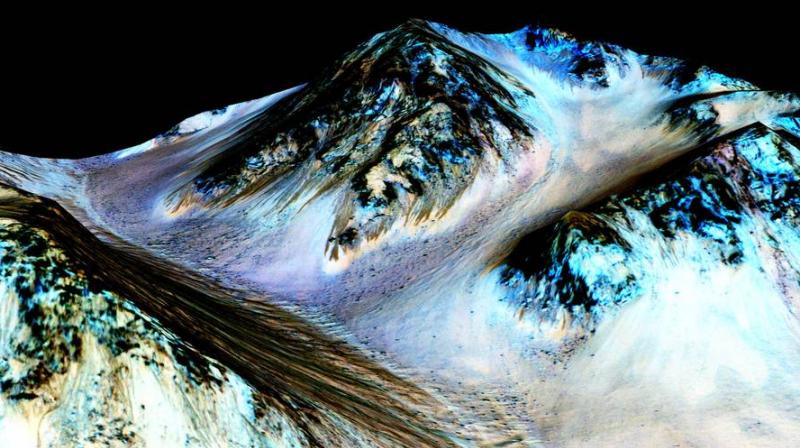Liquid water carved deep canyons on Mars

Dramatic climate cycles on early Mars, triggered by build-up of greenhouse gases, may have caused liquid water to carve out deep canyons and extensive valley networks on the red planet's surface, scientists including one of Indian origin have found.
Scientists have long debated how these canyons and valley networks - like the kinds carved by running water over millions of years on Earth - could form on Mars some 3.8 billion years ago, a time many believe the planet was frozen.
The researchers, including Ravi Kumar Kopparapu from University of Maryland in the US, suggest a glacier-covered early Mars may have experienced long warm periods, lasting up to 10 million years at a time, caused by a thick atmosphere of carbon dioxide and hydrogen.
The team found the warming cycles would have lasted long enough, and produced enough water, to create the features.
"With the cycling hypothesis, you get these long periods of warmth that give you sufficient time to form all the different Martian valley networks," said Natasha Batalha, graduate student at Pennsylvania State University in the US.
Previous research suggested that asteroid impacts warmed the planet, creating steam atmospheres that led to rain.
However, those warm periods would have much shorter durations and struggled to produce enough water.
"We think Mars had to be warm for millions to tens of millions of years, and the impact hypothesis can keep it warm for thousands of years," said Jim Kasting, Professor at Penn State.
Kasting said valleys on the Martian surface are similar in width to the Colorado River Canyon.
Scientists estimate it took 16 million years for the Colorado River, swollen seasonally as the snow melts in the Rocky Mountains, to carve the nearby Grand Canyon.
Using climate models, the team showed warming periods caused when greenhouse gases reached a certain tipping point -lasted millions of years on Mars.
With the right choice of parameters, these warm periods can last up to 10 million years.
According to researchers, greenhouse gases accumulated in the atmosphere gradually, belched by volcanic eruptions, released by cooling magma on the surface or seeping up from the planet's crust.
Rain naturally removes some of this from the atmosphere when it falls, storing some carbon in the ground through a process called chemical weathering.
However, since early Mars was cold, it rained less and this process couldn't keep up, the researchers said.
As the planet warmed, chemical weathering would eventually happen faster than volcanoes could return gases into the atmosphere, and the planet would begin to cool, ushering in another ice age.

